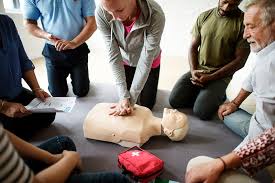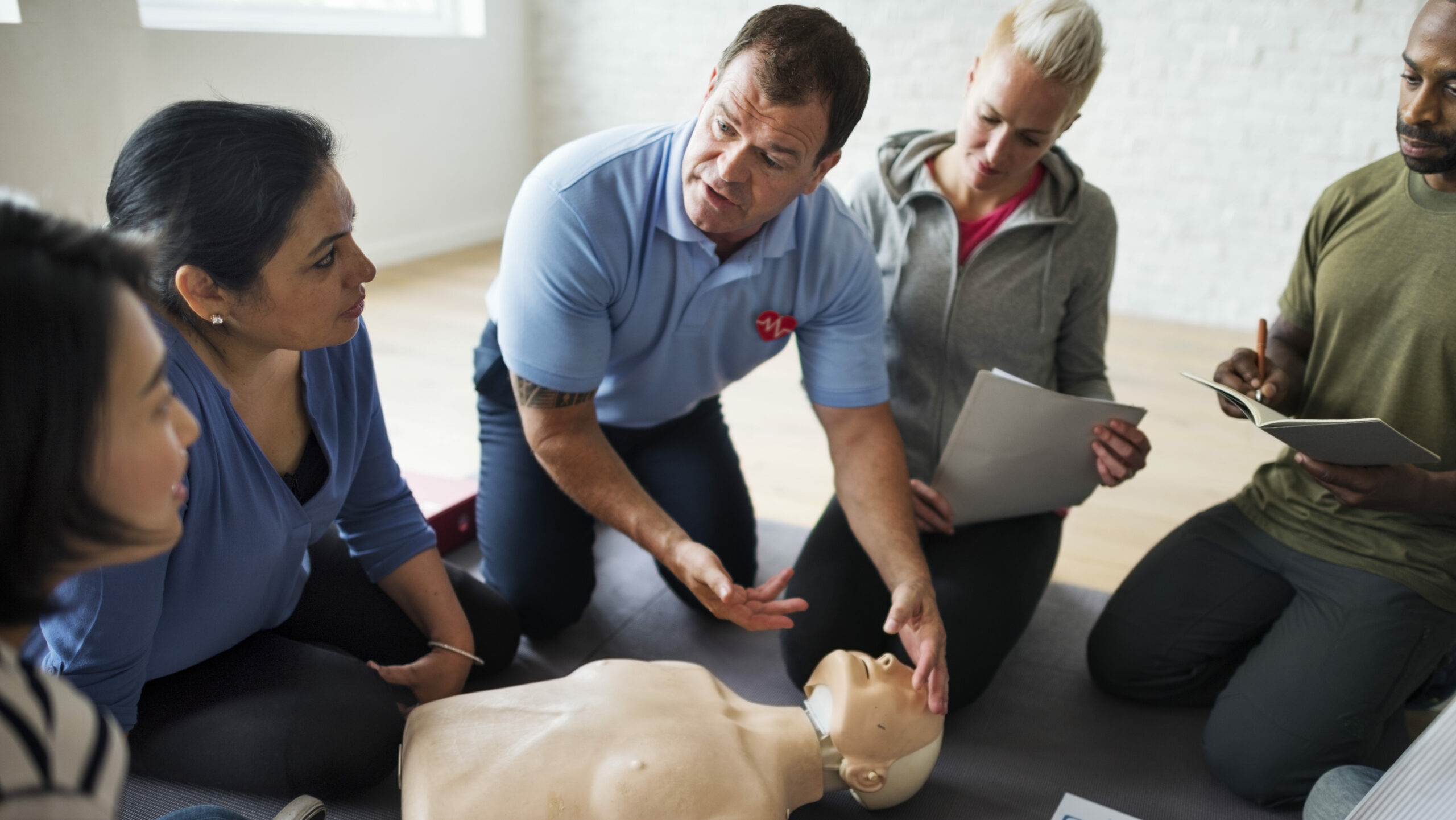Introduction
In an uncertain world, recognizing just how to save a life can be one of the most effective ability one might have. Cardiopulmonary resuscitation, generally known as CPR, is an important tool in emergency situation scenarios where somebody's heart beat has stopped. It's crucial for not just health care professionals however also for ordinary citizens who desire to make a difference. This extensive post delves into the subtleties of CPR, including its importance, techniques, and the detailed training given in mouth-to-mouth resuscitation courses.
Understanding CPR: The Lifesaving Abilities Taught in Mouth-to-mouth Resuscitation Courses
CPR is greater than just a collection of compressions and breaths; it is a lifesaving method that combines expertise with practical abilities. Comprehending mouth-to-mouth resuscitation entails identifying when first aid courses Newcastle it is necessary First Aid Course Belmont and performing the suitable actions successfully. The primary objective of mouth-to-mouth resuscitation is to maintain blood flow to important body organs until specialist medical help shows up.
Why Is Understanding mouth-to-mouth resuscitation Important?
Lifesaving Potential: Among one of the most compelling reasons to find out CPR is its ability to conserve lives. According to the American Heart Association (AHA), immediate mouth-to-mouth resuscitation can increase or even triple a sufferer's possibility of survival after heart arrest.
Common Occurrences: Cardiac arrests can happen anywhere-- in your home, work, or public locations. Having people learnt CPR raises the possibility of prompt assistance.
Empowerment: Knowing mouth-to-mouth resuscitation encourages individuals with the confidence and ability to act decisively throughout emergencies.
Community Impact: A community geared up with people trained in first aid and mouth-to-mouth resuscitation produces much safer settings for everyone.
What Are the Objectives of a First Aid Course?
First aid courses generally aim to equip participants with important skills needed in emergencies:
- Understanding Fundamental Life Support (BLS): Individuals learn about air passage monitoring, breathing support, and circulation restoration. Identifying Emergencies: Training includes acknowledging various emergency situations like choking, sinking, or heart attacks. Learning Techniques: Practical sessions focus on hands-on discovering of methods such as breast compressions and rescue breaths.
Types of CPR Courses Available
There are numerous kinds of mouth-to-mouth resuscitation training courses available relying on individual demands:
Basic Life Assistance (BLS):- Aimed at doctor and professionals. Covers grown-up, child, and baby resuscitation techniques.
- Designed for laymans or non-healthcare professionals. Emphasizes emergency treatment basics together with adult/child/infant resuscitation.
- Convenient option for those with limited schedules. Often consists of video demonstrations but does not have hands-on method unless incorporated with in-person sessions.
- Tailored programs designed for details workplace environments. Focus on relevant situations employees might encounter.
What Abilities Are Covered in Emergency Treatment and CPR Courses?
1. Recognizing Emergencies
Participants discover exactly how to recognize critical situations needing treatment quickly.
2. Doing Upper Body Compressions
Chest compressions are basic in maintaining blood circulation during cardiac arrest.
3. Providing Rescue Breaths
Breathing methods ensure oxygen reaches crucial organs when someone can not breathe independently.
4. Making Use Of an Automated External Defibrillator (AED)
Training frequently consists of just how to utilize an AED properly, which can recover typical heart rhythms.
5. Taking Care Of Choking Incidents
Students are taught just how to carry out stomach drives on choking targets both adults and infants.
6. Managing Various Other Medical Emergencies
Courses may likewise cover various medical situations like strokes or extreme sensitive reactions.
The Importance of Accreditation After Completing a Course
Obtaining a first aid certification after finishing your training is essential for several factors:
- It validates your abilities and knowledge. Many workplaces require accreditation for specific roles. It constructs credibility among peers and companies regarding your preparedness to respond in emergencies.
Detailed Description of Key Techniques Taught in Mouth-to-mouth Resuscitation Courses
Chest Compressions: The Structure of CPR
Chest compressions are probably one of the most vital facet of doing reliable cardiopulmonary resuscitation due to the fact that they circulate blood via a sufferer's body also when their heart has quit beating:
- Place your hands at the center of the individual's chest. Keep your elbow joints right while pressing down set at a rate of 100-- 120 compressions per minute. Allow complete chest recoil between compressions for optimal blood flow.
Rescue Breaths: Offering Oxygen When It Issues Most
After every 30 upper body compressions, it is vital to provide 2 rescue breaths if educated:
Open the air passage by tilting the head back slightly. Pinch the nose closed while sealing your lips around their mouth. Give 2 breaths lasting about one second each while watching for upper body surge before proceeding compressions.
Recognizing Cardiac Arrest vs Various Other Emergencies
Understanding when to launch CPR can be tricky yet is critical:

- Look for unresponsiveness coupled without any regular breathing or pulse-- this shows cardiac arrest. In situations where there is still taking a breath yet it appears irregular (gasping), call emergency services right away before proceeding with rescue efforts.
Using AEDs Efficiently During Emergencies
An Automated External Defibrillator (AED) offers clear instructions by means of visual prompts and voice commands:
Turn on the AED as soon as you obtain it from its case. Attach pads according to pictures on them-- one pad ought to exceed the ideal nipple area while another goes below the left armpit. Ensure no one touches the victim while examining their heart rhythm; supply shock if advised by tool prompts.FAQs About Recognizing CPR
Q1: How much time does it take to complete a first aid course?
A: Most emergency treatment courses last in between 4-- 8 hours relying on content deepness; innovative qualifications might require longer sessions topped multiple days.
Q2: Can I take an emergency treatment course online?
A: Yes! Several organizations provide combined discovering choices where academic elements are finished online adhered to by functional analyses in person.

Q3: Is accreditation valid indefinitely?
A: No; accreditations generally need revival every 2 years as a result of developments in guidelines and methods within emergency situation action training industries like those entailed with first aid programs or BLS certifications especially concentrated on reliable care shipment techniques throughout crises encountered across various settings-- from homes through workplaces!
Q4: Will certainly I find out just how to aid youngsters or infants?
A: Yes! Most quality training courses cover techniques customized specifically towards pediatric people together with adult-focused training components guaranteeing broader applicability across age throughout emergency situations experienced daily within our communities!
Q5: What are some common misunderstandings regarding performing CPR?
A: A common misunderstanding is that you must not try any kind until skilled experts show up; however acting swiftly can significantly improve outcomes if initiated appropriately making use of info obtained through organized programs like those provided within Emergency treatment & & CPD settings!
Q6: Do I need any kind of unique equipment for my training session?
A: Normally speaking all essential products will be provided by teachers including manikins made use of method scenarios entailing both compression-only variations together with typical rescue breath formats making certain comprehensive understanding acquired throughout coursework undertaken within designated durations allotted accordingly based upon specific schedules/preferences!
Conclusion
In verdict, understanding cardiopulmonary resuscitation (CPR) gears up people with life-saving skills that can indicate the difference between life and fatality during emergency situations involving cardiac arrest or various other health dilemmas needing prompt treatment before specialist aid arrives! Enlisting on your own into certified first aid courses guarantees you're prepared ought to an unfortunate occasion take place around you-- equipping not only personal self-confidence however likewise cultivating community strength general! Whether you choose on-line classes mixed discovering approaches conventional classroom configurations inevitably leads in the direction of obtaining useful insights boosting response capacities responding efficiently in the middle of uncertainty faced frequently browsing CPR Course Melbourne unforeseeable circumstances intrinsic daily living experiences shared collectively throughout society today!
By prioritizing education surrounding these vital subjects we develop much safer settings cultivating stronger links in between individuals making whole neighborhoods healthier holistically moving forward together unified actively in the direction of attaining common objectives visualized throughout shared journeys in advance filled pledge hope better futures await all of us-- one heart beat at time!
